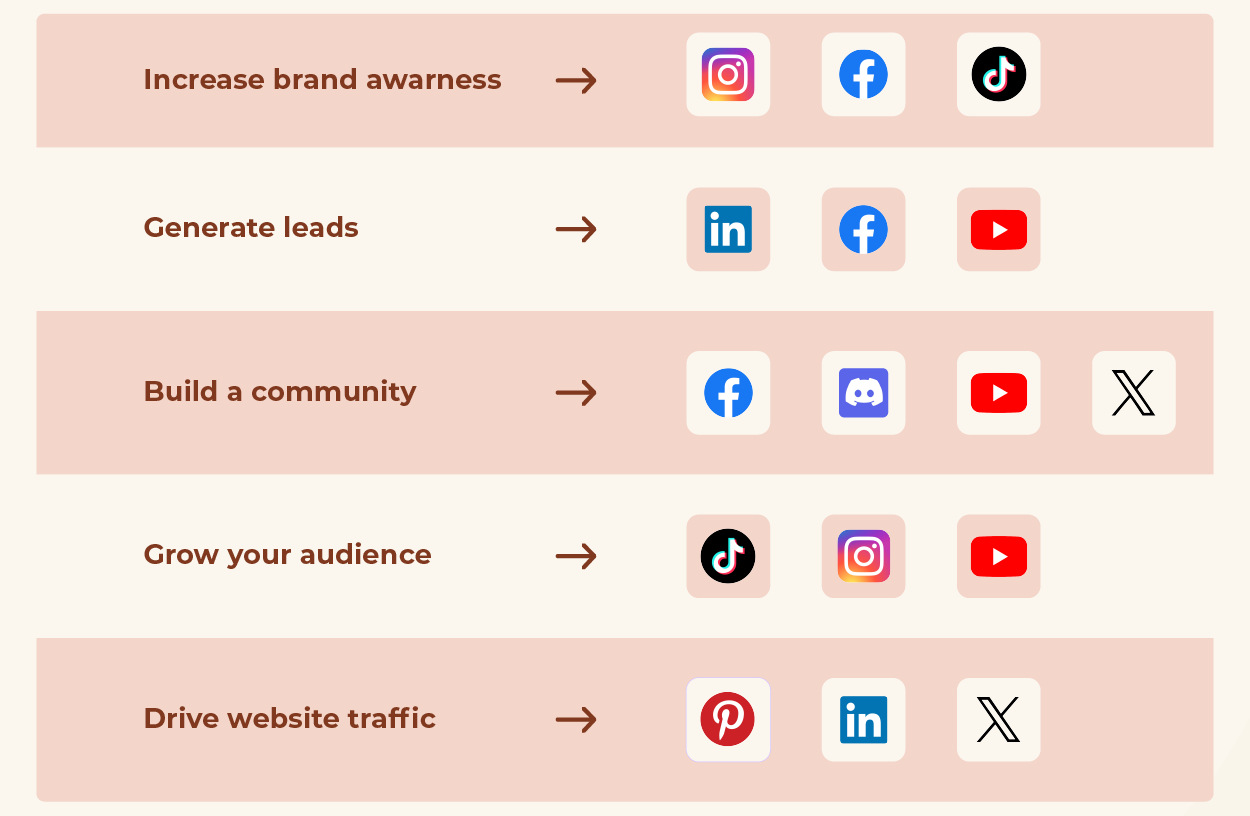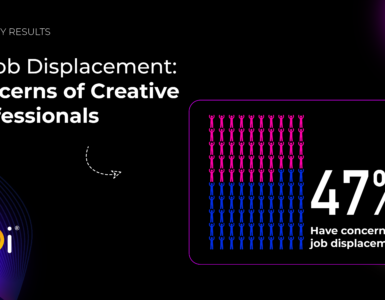You don’t need to be on every social media platform to succeed and trying to be everywhere at once can stretch your resources too thin.
Not every platform is relevant to every target audience, so focusing your efforts where they’ll have the most impact is key.
With so many social platforms available, it can be confusing to know where to begin and where to best prioritise your resources.
Here’s our 5-step guide to selecting the best social media platforms for your business.

Step 1: Identify Your Audience
Understanding your audience is the foundation of any social media strategy. The better you know your customers, the easier it will be to engage with them on certain platforms.
Different customer demographics tend to spend more time on certain platforms than others. The same applies to interests, customers with specific interests naturally gravitate toward a particular platform.
Begin by asking yourself:
- Who are your customers? Demographics such as gender, location, interests, and profession.
- Are your audience B2C or B2B? Do you sell DTC or through other channels?
- Are they primarily male or female? Certain platforms cater to specific demographics.
- How old are they? Younger audiences are more active on platforms like TikTok and Instagram, while older generations tend to prefer Facebook and LinkedIn.
- Where do they spend the most time online? Each social platform attracts different user behaviours.
Use tools like Google Analytics and Facebook Insights to gather data on where your potential customers are active.
Once you’ve created clear consumer profiles, start to narrow down where they are spending the majority of their time online.
Pew Research Center shared their research on US demographics across different social media platforms.
Here’s some of their key findings:
💡 YouTube and Facebook are the most widely used social platforms across all age groups, followed by Instagram.
💡 Considerably more women use Pinterest then men.
💡 Younger adults are far more likely to use Instagram, Snapchat and TikTok.
💡 People with higher levels of formal education are especially likely to use LinkedIn.
Step 2: Research Your Competitors
Competitor research will provide valuable insights into which platforms work best in your industry.
If you notice high levels of engagement and interaction between a competitor brand and their consumers on certain platforms, it’s a strong indicator that your potential customers are actively using those platforms.
Analyse their social media presence by considering:
- What platforms are they on?
- Where do they post most frequently? This indicates where they see the most engagement.
- What type of content are they posting? Is it humorous, informative, educational or promotional?
Step 3: Consider Your Industry
Different industries thrive on different platforms. Understanding where businesses in your industry succeed can help guide your decision.
Social media management platform, Sprout Social, conducted research on the best social media platforms for business marketing.
Their findings can help you make an informed decision about which platforms align best with your industry.
Here are just some of their key findings:
- Facebook – Brick and mortar small businesses are two industries that stand out on Facebook. It’s useful for promoting local events, creating niche groups, gathering reviews, offering customer service and social advertising.
- YouTube – The industries with the strongest influencer media value on YouTube are tech, gaming and food and beverage.
- Instagram – Travel, beauty, fashion and health/ fitness tend to do well on Instagram. If your brand is all-in on influencer marketing, user-generated content and short-form video, Instagram is crucial.
- TikTok – TikTok remains a great option for businesses targeting younger demographics around the world with video content.
- Pinterest: Some of the most popular categories on Pinterest include fashion, food and drinks, beauty, home decor and travel.
- Twitch – If your brand is in the gaming industry, Twitch is a given. The platform has 73% of the market share when it comes to streaming platforms for gamers.
Step 4: Define Your Social Media Goals
When deciding on your choice of platforms, consider how they align with your marketing objectives.
Having a clear understanding of what you want to achieve with social media will help you make more strategic decisions about where to focus your efforts.
Are you focused on building awareness around your brand? Do you want to generate leads or drive traffic from socials to website?
This needs to be considered as different platforms can help you achieve these goals better than others.
If you want to:

Step 5: Assess Your Resources
Having a successful social marketing strategy requires consistency and high-quality content. Maintaining a steady flow of engaging, well thought-out content helps build trust and keep your audience engaged with your brand.
The better your content, and the more aligned it is with your customers’ interests and needs, the greater the return on investment you’ll see.
High-quality, relevant content drives stronger connections, higher engagement, and ultimately, better business results.
However, do consider your resources:
🕙 Do you have enough time to manage multiple platforms? Posting, engaging, analysing data.
💰 Do you have the budget for paid ads, content creation or social media management tools?
👥 Do you have a team to help with content creation, scheduling and engagement?
If resources are limited, start small and focus on quality over quantity. Don’t spread yourself too thinly.
Think strategically and prioritise certain platforms that will help you achieve your end goals. From reading this post, by now you should have a good idea of what platforms to focus your time on.
Batch create content in advance, so you have a wealth of content to use and leverage free scheduling tools, like Meta Business Suite, Buffer or Canva to get ahead of posting.
Try repurposing content, such as turning a long-form YouTube video into short clips suitable for TikTok or turn a blog post into a series of educational LinkedIn posts.
Businessman and Bestselling Author, Gary Vee, speaks openly in a recent video on ‘How to Build a Brand in 2025′, where he offers insightful tips on the new reality of social media, which platforms businesses’ should be posting on and much more. Check it out below!
Trends and External Factors
It’s also worth mentioning the consideration of external factors that could be impacting engagement and growth on particular platforms.
X, for example, has seen a 30% drop in usage rates amongst the US demographic, between the time of 2023 and 2024, since the move from Twitter to X.
Whereas Instagram on the other hand, saw a 25.3% year-on-year audience growth in that same time period.
Stay informed about new and emerging social platforms like Bluesky and Threads. Regularly assess whether these channels could align with your goals and are worth investing your time and resources into. However, don’t waste time just jumping on the next new thing.
Summary
By understanding your audience, researching competitors, considering your industry, defining your goals, and assessing your resources, you can make strategic decisions that maximise your impact across your chosen platforms.
Experiment, analyse your results and refine your strategy over time. With the right platforms and a well-planned content strategy, your business can effectively connect with the right audience and drive meaningful results.








Add comment